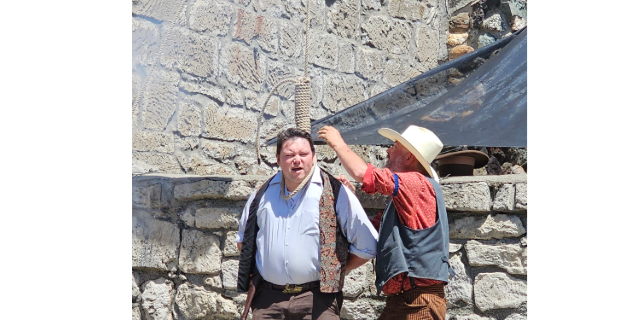Klamath Basin salmon run appears strong
Published 5:00 pm Tuesday, October 22, 2002
KLAMATH RIVER – Despite the loss of an estimated 12,000 adult chinook salmon that died on the Yurok Indian Reservation, down river in September, the 2002 run looks hearty.
It was reported that thousands of chinook salmon died from disease along the banks of the Yurok Indian Reservation last month. But the continued run of salmon looks to be as strong as the last two bumper years.
Ken Oliver, a property owner at the mouth of the Scott River, showed the Pioneer Press hundreds of huge salmon last week. These are wild stocks and they are plentiful.
The three-foot long chinook are swimming in huge swarms in hole after hole that have been deepened by suction dredging operations. The water level is low, but because the holes have been cleaned out there is plenty of room for the masses of salmon that, literally, blacken the crystal clear water.
“This looks like a good run with larger than normal fish,” said Oliver, who is a suction dredger himself.
The water temperature is cooling off, due to the autumn season. Water flows should begin to rise as trees shut down and quit taking so much water, said Oliver. But still a good rain is needed for the salmon to migrate to the higher portions of the river.
A second year of drought is affecting water flows.
The females have started spawning at the mouth of the Scott and there is sufficient water for them.
Once again dredging seems to result in positive habitat for the salmon, as dredging tailings are the favorite areas for spawning, according to Oliver. The gravel tailings have been cleaned by the eight-inch suction dredges and are in free-flowing portions of the river. Oliver pointed to a handful of salmon that were in the tailings and one-foot-deep riffles of water. They were “doing their thing.”
Last year, the chinook salmon run was so large and the water so low from the 85-year drought that the females laid their eggs on top of other nests, because they liked the dredger gravel tailings the best, said Oliver.
Oliver’s property was once the headquarters of the Roxbury Mines Inc. He has pictures from 80-plus years ago that show the mining operations and the lay of the river. The water level in the 21st century doesn’t look much different from that of the early 1900s.
“Low flows are not new to this stretch of the world by any means,” said Oliver, who explains that being in tune with nature means you accept her “ebbs and flows.” He has been dredging the area for 25 years.
Up at the California Department of Fish and Game Iron Gate Fish Hatchery, Manager Kim Rushton agrees that the chinook run is strong and healthy.
“We’re slightly ahead of last year,” said Rushton of the daily counts of chinook.
He said that the total so far is 3,646 adult chinook that have reached the hatchery on the Klamath. He expects the numbers to escalate, as the returning salmon will hit peak stride by the end of October and first weeks of November. Rushton added that it was predicted the salmon would be large this year and they are.
Last year, 38,000 chinook salmon had been counted at the end of the run, but the 2000 season held the record with 72,000 chinook returning to the Iron Gate Hatchery.
The hatchery has been in operation at the Iron Gate Dam since the 1962-63 season, when just 1,339 chinook were counted. Salmon numbers are on the rise. Rushton said it is too early to tell for sure, but he doesn’t believe the September fish die-off will affect the hatchery operation.
The DFG will have no problem obtaining the eggs needed for the hatchery to grow six million chinook juveniles for next year’s release, he said. The hatchery only needs 8,000 to 10,000 salmon to return.
Liz Bowen, a writer and photographer for the Pioneer Press, can be reached via e-mail at pioneerp@sisqtel.net. The Pioneer Press, based in Fort Jones, Calif., granted permission for this article to be copied and forwarded.





